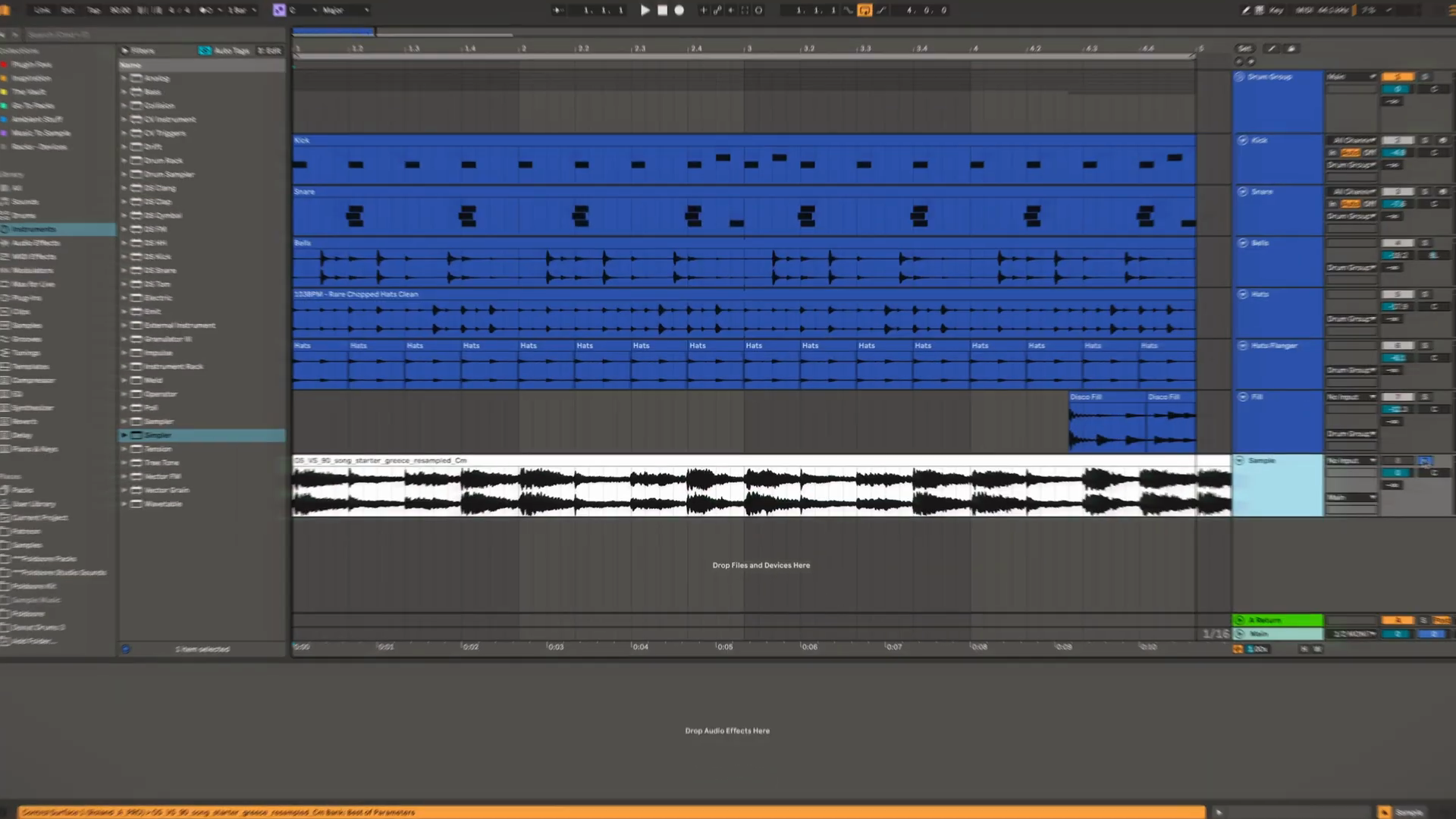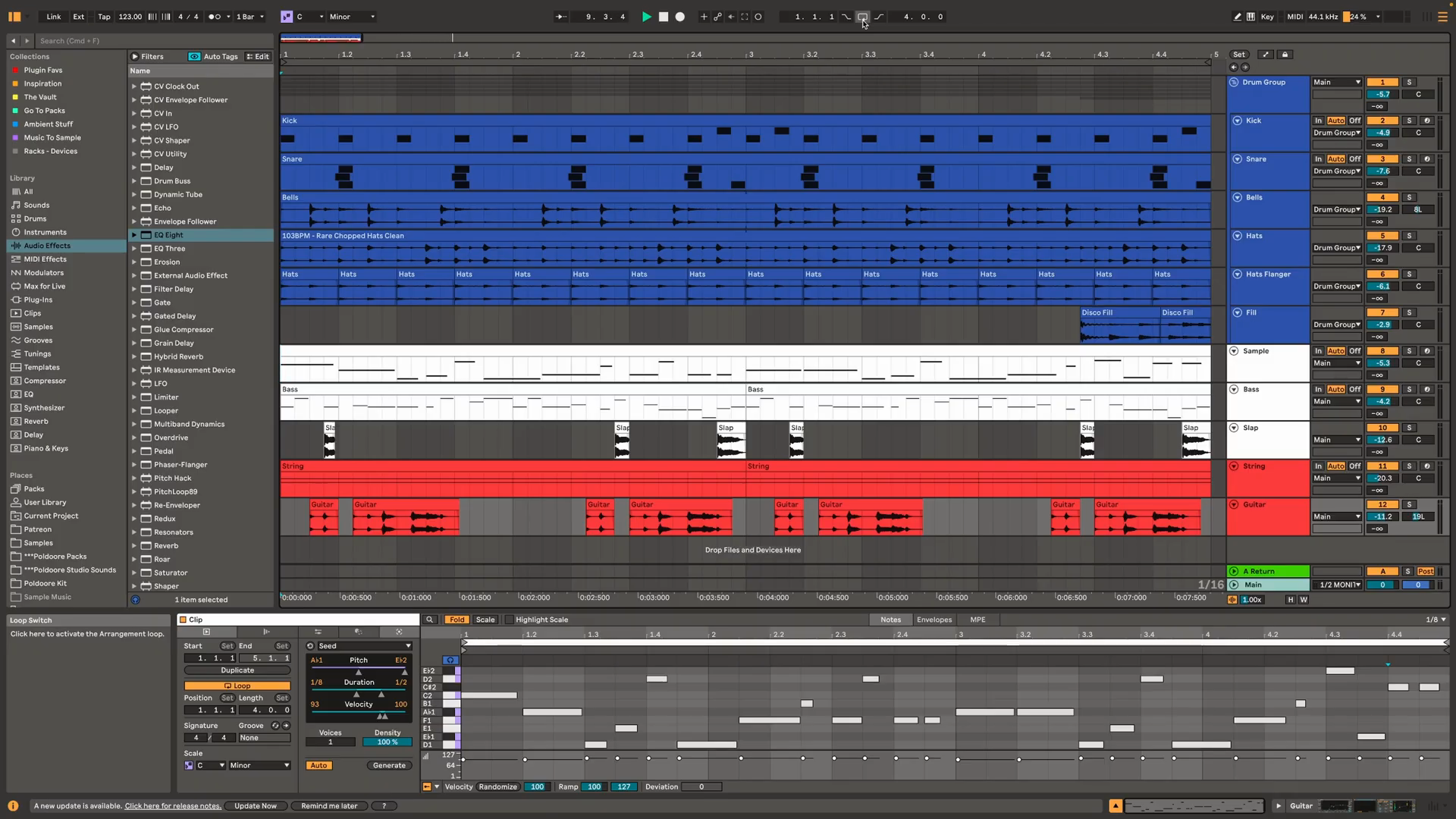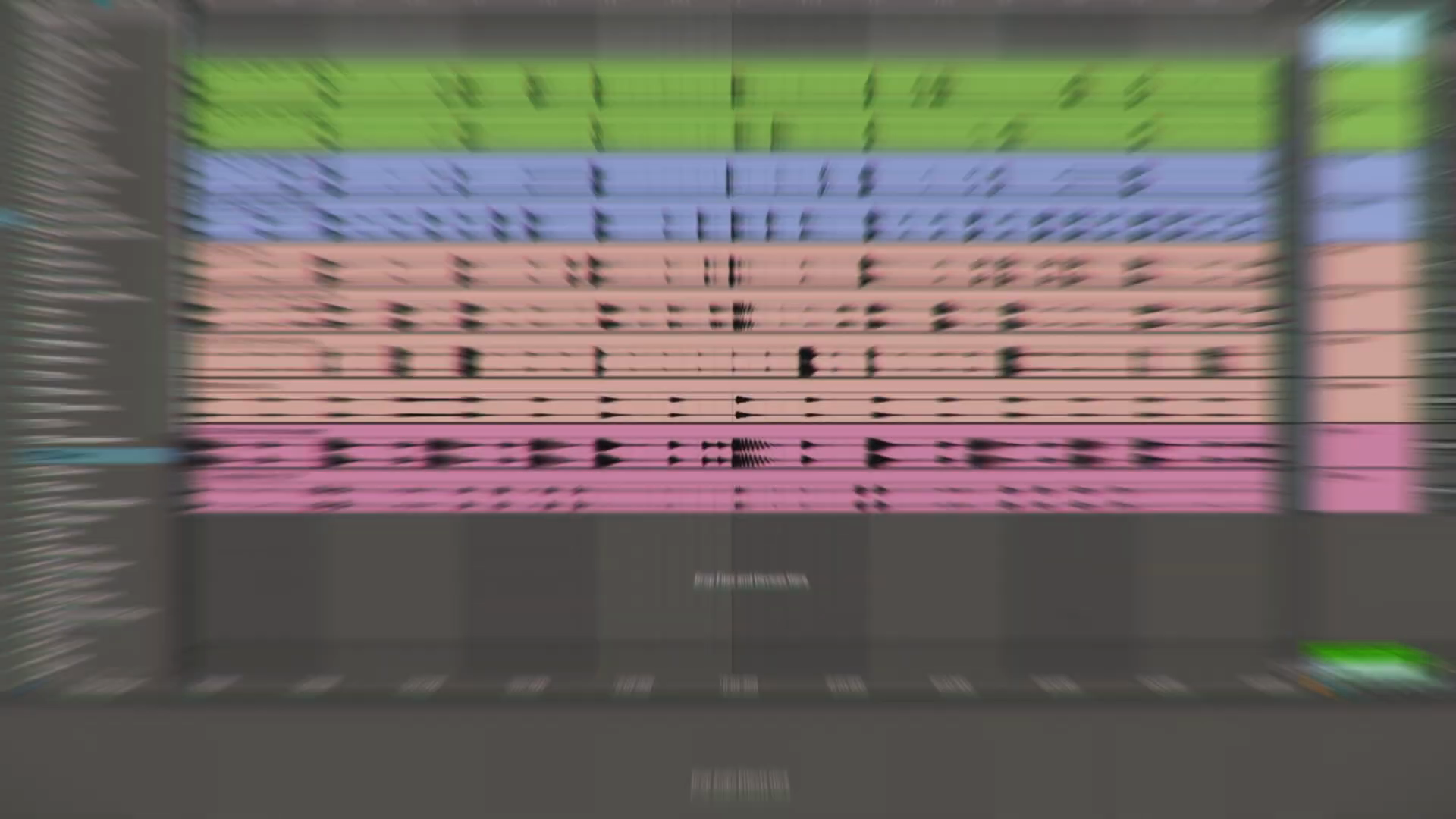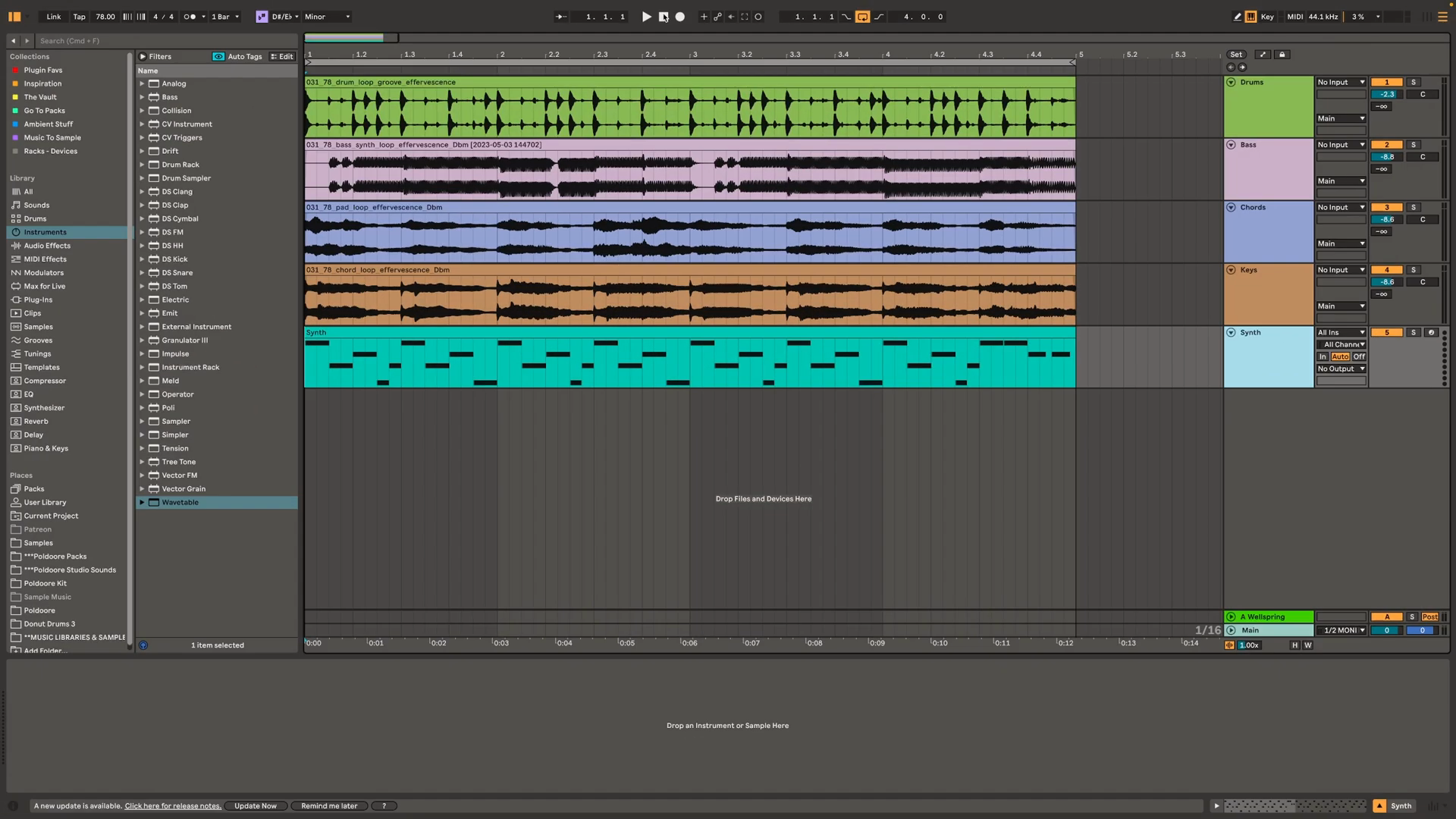10 Creative Ways to Transform Loops - Part 1/2
Credit: @Poldoore
The Problem
Key idea:Everyone uses the same sample websites and loops, risking duplicate sounds and copyright issues.Process / settings:Avoid dropping loops straight into tracks without modification.Result:Understanding the need to transform loops creatively to make them unique.Notes:This is the introduction explaining why creative loop transformation is essential for producers.
00:00 → 00:54

Borrowing Grooves
Key idea:Extract the rhythm pattern from a drum loop you like and apply it to your own drum sounds.Process / settings:- Right-click audio clip in Ableton and select
Convert Drums to New MIDI Track - Use Ableton's
VelocityMIDI effect to normalize velocities (setOut HighandOut Lowto same value, e.g.,100or70-80for natural feel) - Re-record MIDI with adjusted velocities by duplicating track and routing MIDI input
- Extract individual drum layers using
Extract Chainfor each drum rack element - Swap out default
606sounds with your own samples (kick, snare, hi-hats) - Use velocity variations and layer multiple samples (e.g., main kick + ghost kick for subtle variation)
- Process with
Glue Compressor(highpass filter on sidechain, slow attack, fast release),Saturator, andLimiter
- Right-click audio clip in Ableton and select
Result:A custom drum groove with your own sounds while maintaining the original pattern's feel and swing.Notes:Works well with live drum breaks. Can highpass and soften transients of original loop withTransient Master, then blend back in for character without interfering with new kick/snare. Add transient markers manually if Live misses any hits.
00:54 → 10:00

Generative Chopping
Key idea:Use Ableton Live'sSimplerin slice mode with MIDI generative tools to create randomized chopped patterns from melodic loops.Process / settings:- Load loop into
Simpler, switch toSlicemode, set division (e.g.,half beatorquarter note) - Create empty MIDI clip and use Live 12's
MIDI Generative Toolsto generate random patterns - Set note range from lowest slice (usually
C1) to highest slice (check by playing) - Adjust grid quantization (
8th notes,16th notes) to change pattern feel - Set trigger mode to
Gatefor tight, chopped French House feel (chop plays only for note length vs.Triggermode where it plays full length) - Duplicate loop and add variation to create evolving
4-barpatterns - Experiment with different slice divisions for more textures and dynamics
- Load loop into
Result:Transformed melodic loop with dynamic, randomized chopping that sounds fresh and unique.Notes:Works especially well for French House and other genres requiring short, repetitive patterns. Sidechain compression helps loops punch through with drums. Example used90 BPMloop originally meant for boom-bap but transformed into disco/French House style.
10:00 → 15:16

Streeeeetch
Key idea:UsePaul Stretchplugin to time-stretch audio samples into atmospheric pads and textures.Process / settings:- Load sample into
Paul Stretch(free plugin using Paul's Extreme Time Stretch algorithm) - Stretch amount of
1keeps original length; maximum stretch can extend24 secondsto over6 hours - Set stretch to around
10for4+ minutesof stretched audio for usable pad material - Render and import into Live's
Simpler - Unwarp and normalize audio
- Add slow
attackand longreleasefor evolving pad-like quality - Experiment with different sections of stretched file and pitch (octaves down/up)
- Add effects like reverb, delay, EQ, compression
- Load sample into
Result:Beautiful, cinematic atmospheric pads from any audio source, perfect for ambient textures and sound design.Notes:Paul Stretch can turn any audio into hours or days of ambient soundscapes. Works much better than Ableton's native extreme stretching. Textured and harmonic sounds give best results. Can create sick atmospheric beds and "simmer type beats."
15:16 → 19:40

Loop Collage
Key idea:Chop out the best sections from multiple drum loops and combine them into a unique collage.Process / settings:- Import variety of drum loops with different characteristics
- Isolate individual elements: kick from one loop, snare from another, hi-hats from another
- Tighten transients under
Warpsection to clean up unwanted tails (kick bleed, snare reverb) - Use sidechain compression to help elements blend naturally into rhythm
- Add subtle layer like vinyl crackle or tape noise to glue everything together
Result:A completely new, cohesive drum loop built from fragments of multiple sources.Notes:Focus on individual sounds that stand out rather than listening to loops as a whole. Helps create unique grooves that don't sound like stock loops.
19:40 → 21:11

Wavetable Fun
Key idea:Import any audio sample into Ableton'sWavetablesynthesizer to create dynamic, evolving synth sounds.Process / settings:- Drag any sample (melodic hits, drum loops, textured sounds) into
Wavetable - Use
Oscillator Positionslider to morph through the wavetable - Use
WarpandFoldparameters to twist and reshape waveforms - Add modulation via
Mod Matrix:- Map
Amp EnvelopetoWarpamount - Use
LFO 1to modulate wavetable position (disable re-trigger for continuous movement) - Use
LFO 2with random waveform to modulateFoldamount - Use
Envelope 3to modulateLFO 1 Ratefor meta-modulation
- Map
- Adjust
Global Modulation Amountto dial back intensity - Shape
Amp Envelopefor plucky or pad-like sounds - Apply filter envelope with types like
MS-2and push resonance for character - Add
EQandCompressorfor dynamics control - Use
Oscillator 2to layer additional wavetables (e.g., bass support under pluck) - Try
Oscillator Effects(FM, Modern, etc.) to further reshape sound - Browse samples in same folder using dropdown to quickly try different source material
- Drag any sample (melodic hits, drum loops, textured sounds) into
Result:Rich, textured synth sounds ranging from plucks to pads to glitchy textures, all from simple audio samples.Notes:Textured sounds (flutes, guitars, vocals) usually give most interesting results. Percussive sources like drum loops create cool glitchy effects due to silence between hits. Recording while experimenting is recommended to capture happy accidents. Works with melodic samples (trumpet, bass) and percussive loops. Can create sounds from simple loops to complex evolving textures.
21:11 → end
